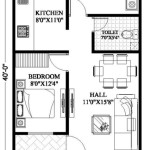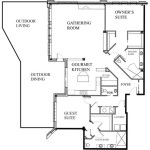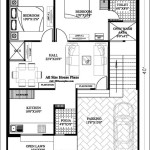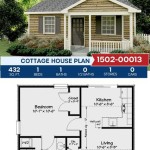Full Basement House Plans: Essential Aspects
Full basement house plans provide ample space, versatility, and potential for customization. Whether you're looking to create an additional living area, storage room, or recreational space, a full basement can transform your home's functionality and value. Here are key aspects to consider when planning a full basement:
Size and Layout
The size and layout of your basement will depend on the overall footprint of your home and your specific needs. A typical full basement covers the entire footprint of the main floor, offering ample space for various uses. Consider factors such as the number of rooms, window placement for natural light, and the flow of traffic when designing the layout.
Ceiling Height
Adequate ceiling height is crucial for a comfortable and usable basement space. Building codes typically require a minimum ceiling height of 7 feet, but higher ceilings create a more spacious and inviting environment. Consider your intended uses and the height of furniture and fixtures when determining the optimal ceiling height.
Access and Stairs
Convenient access to the basement is essential. Exterior access via a basement door can provide quick and easy entry for storage and maintenance purposes. An interior staircase should be well-designed for safety and functionality, with wide treads, a comfortable slope, and sturdy railings.
Natural Lighting and Ventilation
Natural light and ventilation help create a healthier and more pleasant basement environment. Include windows in the basement walls or install a light well to bring in natural light. Proper ventilation systems, such as a basement exhaust fan, help remove moisture and prevent mold and mildew.
Materials and Finishes
The materials and finishes used in your basement will impact its durability, functionality, and aesthetics. Consider moisture-resistant materials like concrete block or poured concrete for the walls and floors. Choose durable flooring options that can withstand potential moisture, such as tile, vinyl, or laminate. Choose lighting fixtures, paint colors, and finishes that reflect your style and create a welcoming atmosphere.
Drainage and Waterproofing
Proper drainage and waterproofing are vital to prevent water damage in your basement. Install a perimeter drain system around the foundation to channel water away from the walls. Install a sump pump to remove excess water. Consider waterproofing the walls and floors with sealants or coatings to prevent moisture penetration.
Utilities and Storage
Ensure your basement has adequate utilities, including electrical outlets, plumbing, and HVAC. Consider installing a separate heating and cooling system for the basement to maintain a comfortable temperature. Utilize built-in shelves, cabinets, and closets to maximize storage space and keep the basement organized.
Additional Considerations
When planning a full basement, it's essential to consider additional factors such as:
- Egress windows for emergency escape
- Fire sprinklers for safety
- Soundproofing to minimize noise transfer from the main floor
- The impact of basement construction on the home's structural integrity
Conclusion
Full basement house plans offer a wealth of opportunities to expand your home's space and functionality. By carefully considering the essential aspects outlined above, you can design a basement that meets your needs, enhances your lifestyle, and adds value to your property.

Simple House Floor Plans 3 Bedroom 1 Story With Basement Home Design 1661 Sf Basementdesignflo One New

Stylish And Smart 2 Story House Plans With Basements Houseplans Blog Com

Basement Floor Plans How To Make A Good Plan For House Layout

Home Plans With Finished Basements

Home Plans With Finished Basements

How To Plan For A Finished Basement Chiefblog

Versatile Spacious House Plans With Basements Houseplans Blog Com

C 511 Unfinished Basement Floor Plan From Creativehouseplans Com

P 801 Finished Basement Floor Plan For The Paoletti House

House Plan 51697 Traditional Style With 1736 Sq Ft 3 Bed Ba








